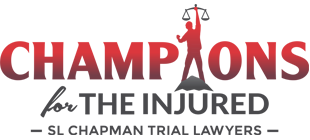Burn Injuries
According to the American Burn Association, more than 1 million Americans suffer from burns every year, with nearly 4,500 of those resulting in death. Surprisingly, burn injuries are the second most common cause of accidental death in the U.S., right behind auto accidents.
Burns are among the most common household injuries, especially in children. The term “burn” means more than the burning sensation associated with this injury. Burns are characterized by severe skin damage in which many of the affected cells die. Depending on the cause and degree of injury, most people can recover from burns without serious health consequences. More serious burns require immediate emergency medical care to prevent complications and death.
Types of Burn Injuries
- Thermal burns – can be caused by flame, heat or contact with a hot object.
- Chemical burns – these burns most often occur in industrial settings; however, they can also be caused by common household cleaners and swimming pool chemicals. Many times, chemical burns do not appear serious at first, but become worse as they continue to react with the exposed tissue.
- Scald burns – scalds are produced by hot liquids such as water or cooking oil. These are the most common burns seen in children. Elderly persons are also at risk especially when their sensitivity to heat or cold is diminished.
- Electrical burns – in addition to the actual burn, electricity can cause serious internal injuries that are not immediately visible to emergency personnel or other healthcare providers. Electrical burns can cause everything from heart attack and neurological damage to broken bones and ruptured ear drums. Electrical current can cause either a flash of flame or electrocution. Electrocution injuries are always much worse than they appear. With electrocution, even a small dime sized burn can place a person at risk for losing a limb.
Classifications of Burns
There are three primary types of burns: first, second, and third degree. Each degree is based on the severity of damage to the skin, with the first degree being the most minor and third degree being the most severe. Damage includes:
- First degree burns – also called a superficial burn injury. It looks like a typical sunburn injury: red, non-blistered skin.
- Second degree burns – also called a partial thickness burn injury. Second degree burns are bright red, moist, and painful to touch. They include blisters and some thickening of the skin.
- Third degree burns – also called a full thickness burn injury. They contain widespread thickness with a white, leather appearance.
Fourth degree burns occur when a burn injury is so intense that it reaches muscle, tendon, ligament or even bone. Burns at this level are usually life threatening and can lead to amputation.
It is critical that burn injury victims and their families surround themselves with knowledgeable, experienced and caring professionals to help them through what may be the most difficult time of their lives thus far. The attorneys at SL Chapman provide compassionate, knowledgeable, personal and experienced representation to burn injury victims and their families.
If you or your loved one has been a victim of a severe burn injury, or are the survivor loved one of a burn fatality, then you may be entitled to damages including medical care, lost wages and other compensation. Our burn injury victims have received settlements that helped pay for their medical bills, hospital stays, physical therapies, loss of work, pain and suffering, wrongful death and many others. If you or a loved one has been involved in a preventable burn incident do not let those responsible get away, leaving you to pay the bills. Contact SL Chapman today at 800-550-2106 for a free initial legal consultation.

